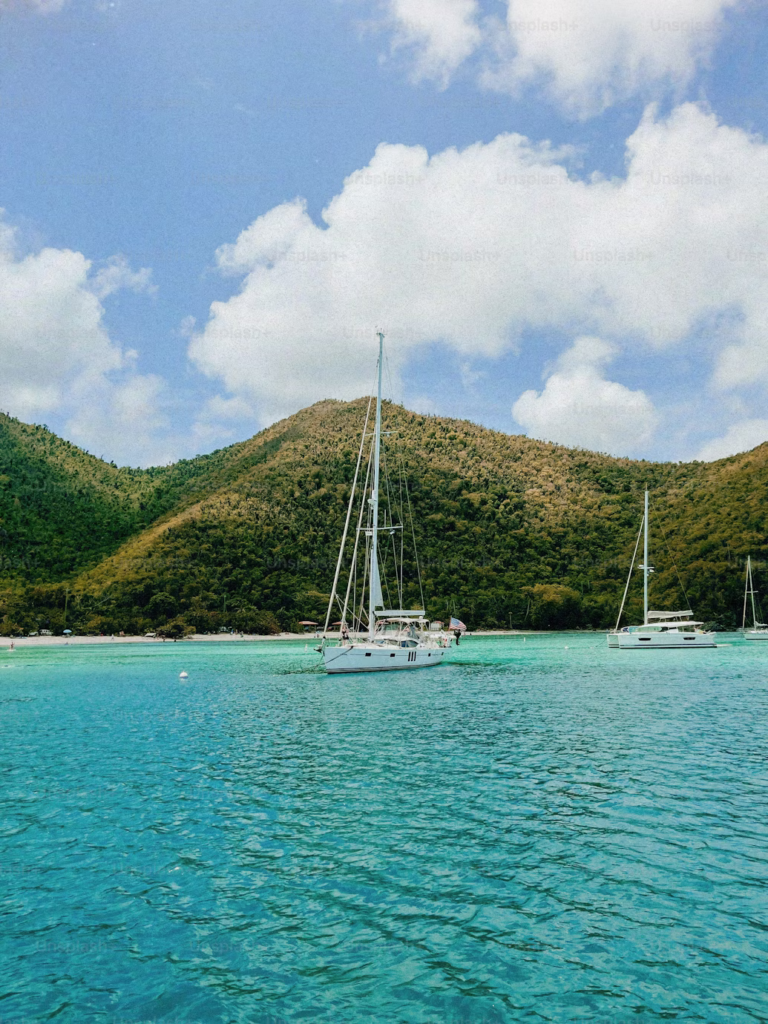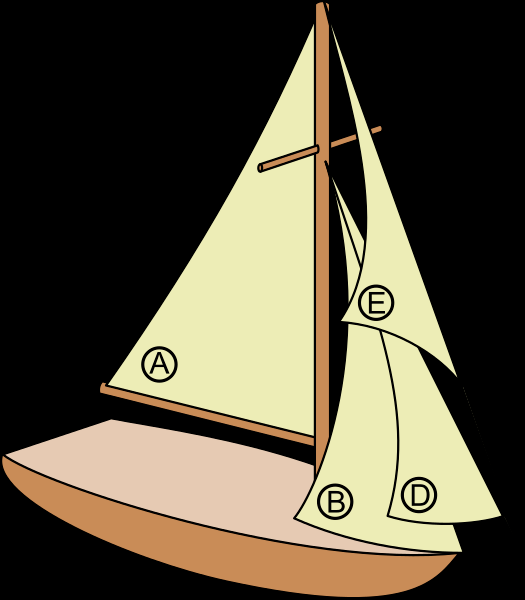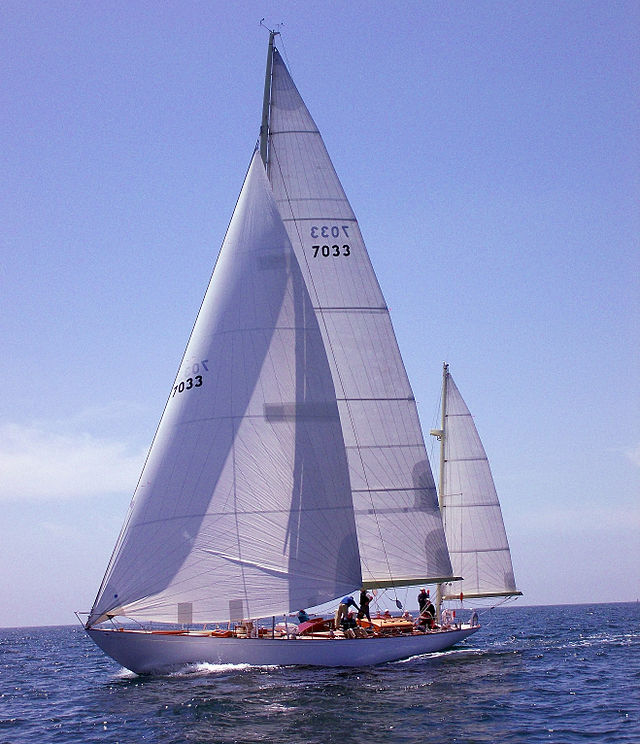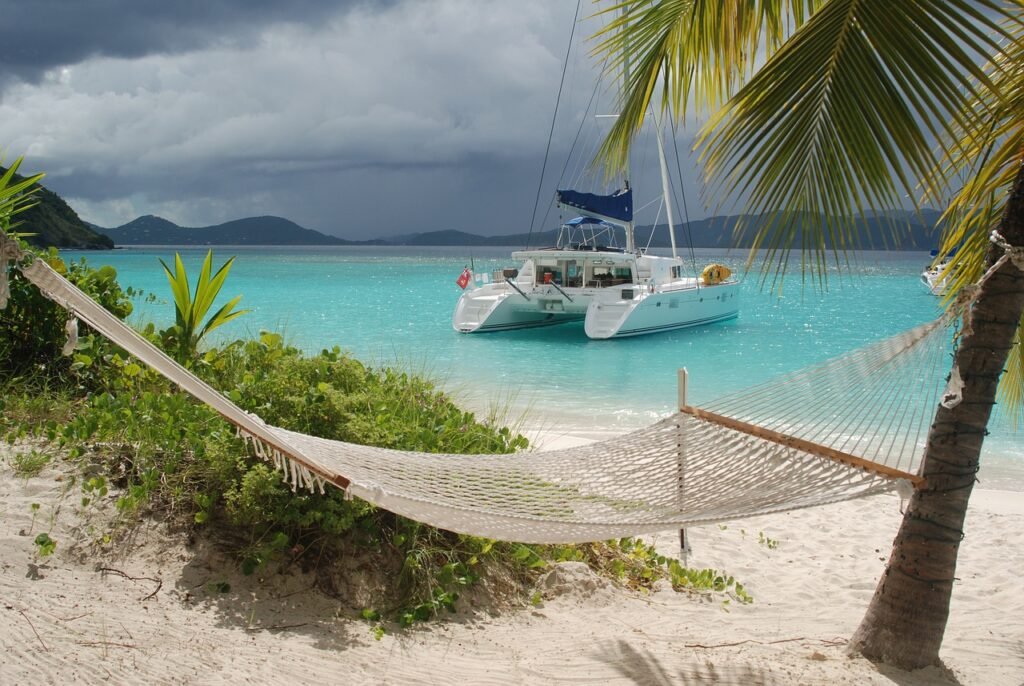Your Guide to 6 of the Most Common Ways to Rig a Sailboat

When it comes to the choice of Sailboat Rig there are many options, but only a few will be effective for the weather conditions, hull shape and seas you are expected to face.
Throughout the ages many hundreds of ways have been invented to rig a sailboat and we will focus on the 6 most common rigs you are likely to find today. The scope of this article is too small to go into every detail of each Rigging system, but I hope to give a good overview.
*A note on Catamarans:
We focus here mainly on monohulls, but most catamarans are sloop rigged, and occasionally cutter rigged.
What does Sailboat Rigging mean?
So, before we begin… Rigging is everything that holds up and attaches the sails to the boat. The rigging consists of the mast, stays and sails.
The right choice of rigging is a very important decision in the design of any sailboat. The rigging and Hull design are crucial in how the boat responds in the water to the wind.
The Rigging effects how the sailboat catches and holds the wind, and how it transfers that force to the hull to allow forward momentum.
Today we will be taking a brief look at:
1. The Sloop
2. The Catboat / Cat Rig
3. The Cutter
4. The Ketch
5. The Yawl
6. The Schooner
1. The Sloop Sailboat Rig

What is a Sloop Sailboat Rig?
It is probably the first image that pops into your mind when asked to think of a modern sailboat. The sloop has a single mast and is rigged to carry a Jib on the forestay. Depending on the conditions, they can also carry a combination of Spinnakers, Genoas, wind-seekers, gennakers, Storm Jibs etc.
It was developed and pioneered on the Islands of Bermuda in the 1600’s. Said to have come from the Jamaican Sloop.
Since the 1900’s this is the most popular rigging configuration. They are called a Bermuda Sloop or Marconi Sloop when they have a single mast with a triangular Mainsail and a Head Sail rigged at the bow on a forestay or on a furler.
This is a very efficient and simple sail arrangement, which also moves effectively upwind.
To distinguish from a Cutter:
Yes there is only one forestay on a sloop but also , the mast is considered within the 40% mark of the total length of the boat from the bow, or under.
A cutter places the mast aft of the 40% mark.
This simplicity means (in Theory…) less gear, less rigging, less to maintain and lower costs, compared to multi-mast and more complicated rigging arrangements.
We can now start to see why the sloop is one of the most popular rigs.
Recap:
– Single mast, One Headsail
– Most Common rig today.
– Headsails include: Spinnaker, Jib, Gennaker, Genoa, wind-seekers, Storm Jibs, etc.
– Also called Bermuda Sloop or Marconi Sloop
– Very good performance sailing close into the wind
– Flexible Sail configurations for varying wind conditions
– Simplicity when sailing, only having to adjust one main and one headsail
– Easier to sail short handed or single handed
2. The Catboat / Catrig

If you have had any experience with sailing dinghies, it is likely that you started out in a Cat-rigged boat. The Laser, Optimist and Sabot are examples that come to mind.
The mast is well forward more towards the bow of the boat. With a single sail and usually no head sail.
When we look at the Cat-rigged sailboat, we see that there is a lot more room behind the Mast which would allow for a big working deck, or more room below decks.
Many fishing sailboats were cat rigged in the past.
This design allows for more space on the boat, as the single mast post is well fore, enabling more open space for a cabin or fishing gear.
Cat-Rigs were often combined with a mizzen mast to form a Cat-Yawl or Cat-Ketch.
Where did the term ‘Cat Boat’ come from?
On many ships in the past the ‘Cat Head’ was a wooden beam or strut that stuck out near the bow of the ship. It’s purpose was to hold the Anchor by the chain, to keep it from damaging the side of the ship. It held the Anchor away from the wooden side.
Being that the mast is positioned well towards the bow of the boat and therefore close to this ‘Cat Head’ it would make sense to call it a ‘Cat-Rig.
Advantages:
– Short-handed Sailing: One sail means that it should also be much easier to sail single handed, depending on the size of the sailboat.
– Sturdy: They had a stable and seaworthy Hull design with a wide beam and a shallow draught.
The mast is very far forward toward the bow and was often unstayed. This led to shorter mast heights. These Cat Rigs were often combined with a Gaff sail to increase the height of the sail from the water.
Having a larger sail volume on a lower mast meant that they heeled over less and required less ballast to right them up against the wind.
– Shallower Draught: This allows access to shallower areas and avoids collisions with submerged rocks on the coast.
– Simpler Sailing: The Catboat is simpler to tack, having only to move the mainsail over to the leeward side of the boat. Whereas a Sloop with a Jib requires the jib to be released and repositioned too.
– Lower Cost (potentially…)
Simpler rigging systems allow for lower costs. One sail, a single mast and no head sails.
Disadvantages:
– Slower: A disadvantage that it has over the sloop, for example, is that the lower sail surface area means that it will be slower in the water, with less options for the prevailing conditions.
Add to this the wider beam and it leads to more resistance of the hull in the water.
– Poor Performance Sailing into the Wind: It will also not perform so well in a close hauled position, sailing close into the wind, due to the lack of a jib. (*Catboats can set a jib, drifter or spinnaker from a temporary bowsprit.)
– Another disadvantage is the extra stiffening required around the base of the mast, because there are not usually any stays on deck to help stabilize the mast.
– Lack of Redundancy: The single sail means a lack of redundancy… If the Mainsail was to become damaged somehow, there are no other sails to get you home. Plan to have a motor and oars just in case… Be prepared.
– Another Major Disadvantage: the mast is well foreward towards the bow and foreward of the centre of the boat.
On a run this can cause the boat to want to turn into the wind due to the Centre of Effort (CoE) being foreward of the centre of the boat.
On a run in big seas and heavy winds, where the rudder is cavitating, it is not unknown for the boat to turn itself into the wind.
Recap:
These make good and relaxed day sailors for calmer conditions. In rougher conditions combined with following seas they are difficult to keep balanced, due to the centre of effort being so far forward.
– The name ‘Cat Rig’ comes from the Cat Head that the Anchor hangs from to protect the bow.
– Simpler Rigging leads to Lower maintenance costs and simpler sailing
– Forward centre of effort (CoE) can lead to rounding up into the wind on a run.
– Lack of redundancy with one single main sail and mast
– Poorer performance close into the wind as a sloop
– Sturdy, Wide beam and shallow draught
– Often with adjustable centreboard
– Simple to sail and easy to sail single handed
– Simpler Rigging and a single sail can mean less cost.
3. The Cutter Sailboat Rig

At first glance, there is not a lot of difference between a Cutter and a Sloop rigged sailboat… But when we look closer, we can see that as well as the main sail there are two head sails.
The two head sails allow the sailboat to distribute the sail area at the bow to allow for easier handling of the head sails. So instead of having one big head sail, there are now two smaller head sails.
This rig really shows its strength on bigger vessels. On larger sailboats, instead of having one very big genoa or jib, there are two smaller and more manageable head sails.
Why don’t we see more Cutter-rigged Sailboats?
The Cutter rig requires more space in the fore-triangle (the area between the Mast and the Bow or forestay, (where the Head sails would be) to enable a balanced sail plan.
This need for a larger fore-triangle means that the mast has to be moved back to accommodate the extra room for the head sails.
On a deck – stepped mast, this means that the load bearing bulkheads that sit under the mast to support it are also a long way back in the boat. This
These load bearing bulkheads then make the living room and accommodation smaller inside.
Double the Head Sails is also double the rigging (two forestays, two sails, two furlers and double the deck hardware).
It is also an extra sail to adjust and maintain whilst underway.
The Cutter rig can’t point quite so close to the wind as a sloop, because the stay sail will start to stall from the Yankee sail.

Recap:
– One Mast with two working head sails
– More rigging and a second head sail means it costs slightly more than a sloop
– Some Cutters have removable inner forestays, so you can convert it into a Sloop depending on the conditions.
– Lighter Loads on the two smaller Headsails, as opposed to one larger Genoa
– Worse performance close to the wind as a sloop
4. The Ketch

A ketch under full sail is a beauty to behold. Could this rig be the best option for cruisers? Let’s find out…
Very similar to a Yawl, with its two masts, it is characterised by the Mizzen mast, which is shorter and Forward of the Rudder Post. The Yawl has the Mizzen mast much further back behind the rudder post.
Unlike the Yawl, the Mizzen on the Ketch does provide forward momentum to the vessel.
This is a very effective sail configuration, especially for larger boats, which helps the boat to remain balanced under sail. The mizzen can also act as an air rudder, to help with manoeuvring.
The sail area is spread out between two masts with at least 3 sails, which can be smaller than on a sloop. This allows for shorter masts and therefore less strain on stays and fasteners.
The mizzen at anchor can also be raised to help steady the boat and stay pointed into the wind.
Storm sailing and Heavy Weather:
A big advantage of the Ketch and it’s 3 to 4 sails is how easy it is to adjust to storm conditions.
If you experience heavy weather, storms or heavy squalls suddenly at sea, the Ketch can quickly and safely be adjusted to storm rigging.
The main can be reefed and eventually pulled all the way in, while the mizzen and jib can maintain speed and control.
When need the mizzen can also be reefed in and the jib adjusted.
Ketch vs Sloop:
– Extra mast, more sails and more rigging will be more expensive. Is there a potentially lower maintenance cost due to lighter loads on lighter sails and shorter masts?
– More balanced
– Performs slightly better than the Sloop downwind, due to more sail area.
– Upwind slower and less effective, mizzen gets caught in wind shadow from the main and fore sails.
– Easier to use and more comfortable
– Shorter masts mean lower bridge clearance.
Some Disadvantages:
– On smaller boats the additional mizzen mast takes up working space on deck and cabin room below deck (with a keel stepped Mast)
– As always, more rigging, more sails and more masts means more cost than a sloop.
– Performance into the wind is reduced, due to the mizzen sail coming into the wind shadow of the main and foresails and adding drag to the boat.
Recap:
– Main Mast and smaller Mizzen Mast
– Balanced power delivery throughout the length of the boat, due to the two masts
– Carry a Jib, like a Sloop
– Usually larger vessels, 40ft+
– Many Combinations of sails for various weather conditions
– Good combinations of reefing to allow balanced sailing in heavy weather conditions
– Mizzen can be used as a Crane, to fit Wind generators, antennas etc.
– Easy to operate single handed
– Sail area spread out
– Mast shorter = stress and strain on rigging reduced, as well as less heel.
5. The Yawl

Elegant and graceful, although it is debatable whether this is an efficient and practical rig, because the mizzen mast is position behind the rudder post. The mizzen doesn’t add much if any power to the boat.
The mizzen can however act as steering if the rudder is somehow damaged or lost. This mizzen sail lends itself well to keeping your boat heading into the wind at anchor.
This ability to help steer the boat becomes very practical on a long-keeled hull.
In higher wind conditions the boat can be sailed on the mizzen and jib and adding or decreasing sail as the conditions allow.
This ‘stepping up’ of sail to meet the conditions ads a lot of flexibility while sailing.
Recap:
– The mizzen being behind the rudder post lends more space on the deck
– To Identify: The Yawl has Two Masts, The Mizzen is Shorter and Aft of the Rudder Post
– Mizzen can be used to help steer the boat and adjust course.
– On long-keeled boats the mizzen can help to bring the vessel around into the wind.
– The mizzen on a Yawl adds little to no forward momentum to the boat and can act as ‘drag’ to reduce overall speed.
6. The Schooner

Once the choice of Pirates and Privateers from the 1700’s into the 1800’s they cut a fine silhouette against the Horizon. The most classic sailboat in this list and perhaps the most impressive, those sails and old style rigging come with a lot of work however!
These rigs are beautiful and on a longer vessel they make a lot of sense. The cost is higher of course with more rigging, more sails and masts.
These rigs are very flexible depending on th
From Tall ships to Schooners, a Big Upgrade
Compared to the Tall Ships of the time, these Schooners were a big upgrade:
– easier to handle
– better in upwind conditions
– smaller
– had a shallower draught
They are however clumsy and slow by todays standards and required a lot of work, with many sails to manage. They were eventually replaced by Sloops and Yawls as they became introduced.
The sail are is broken up between three or more sails, this allows for shorter masts and smaller sails, which are then easier (lighter) for the crew to manage.
The schooner can carry more sail area with less heel, due to the shorter masts and therefore lower centre of effort. This leads to a comfortable ride.
In an Emergency:
The multiple masts and sails, means that in the worse case scenario, with the loss of a mast or some rigging, you can still get home or to the nearest port for repairs.
This redundancy is a major advantage of the Schooner.
Recap:
– Two or more Masts, the Foremast is shorter
– An upgrade on the Tall ships of the time
– Popular between the 1700’s – 1800’s
– More sails, more rigging, more costs
– Practical on longer boats 50’+, with more space for the extra rigging and masts
– Allow for a variety of sails to be flown to optimise for the weather conditions at hand
– Allow the larger boat to be well balanced
– Smaller sails are easier to manage
– Sails were often Gaff rigged
– Comfortable and Powerful
– Can’t point as high as a sloop
– Redundancy in an Emergency.

In Conclusion:
So there we have it, an essential run down of the 6 most common rigging types for sailboats today. Hopefully it has informed you in your decision for which rigging you want in the next boat that you buy and sail.
The choice of rigging is an important one and really depends on many factors, such as:
– Is cost a limiting factor?
– Modern or Classic look?
– Length of the hull
– Expected prevailing weather conditions
– Performance expected, e.g for racing, day cruising or for bluewater cruising and ocean crossings?
– Comfort level expected
– Space for cabins / berths required? or a larger deck for working etc.
– Form vs Function: Should the vessel be more aesthetically pleasing?
And many more…
This article is far too short to go into each topic in depth, but hopefully this gave you a good idea for identifying each of the 6 most common rigs today and gave you some insights into the various pros and cons of each style of sailing.
If you liked this article then chances are you will be interested in our Newsletter. We send out our Newsletter weekly with tips and the latest articles from us.
We want to hear from you! Please send your feedback to info@sailingtt.com
“Fair Winds and Following Seas”
And Remember … “Life Begins Where Land Ends”
If you got value from this article, jump on over to our post on “The Main Types of Sailboat Keel That You Need to Know”
https://sailingtt.com/the-main-types-of-sailboat-keel-that-you-need-to-know/
Resources:
https://www.boatus.com/expert-advice/expert-advice-archive/2016/january/inspecting-sailboat-rigging

